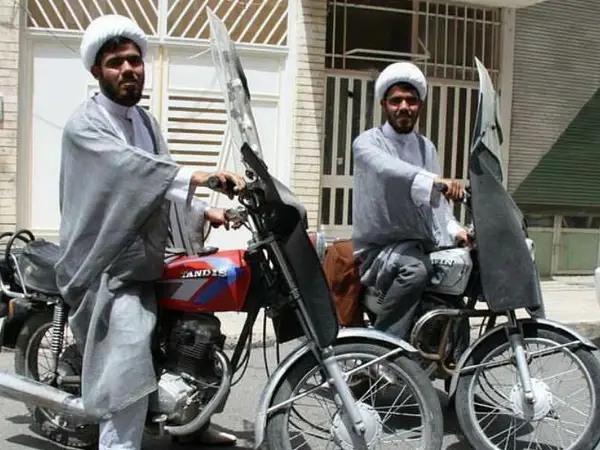This article is the third in a series about Iran’s Shiite clerics, explaining how they study, get a clerical rank, get married and what they do for a living.
----------------------------------------------------------------------------------------------------------------------------
As Iranian cleric Seyyed Ahmad Batha'i has observed, "Generally speaking, there are two types of clerics in Iran: Those who are good speakers, and those who are not, regardless of the level of their knowledge."
A good cleric should have a good voice, be a good storyteller and be capable of grabbing and keeping the attention of audiences. They should also know a little about classical Persian music, dastgahs, so that they could sing the dramatic bits of religious stories. Some clerics do it very well. Some don't.
Former President Hassan Rouhani was definitely a bad singer according to his friends and foes. Every Muharram, he used to eulogize and sing during the cabinet meetings to pay tribute to the martyrs of Karbala including Imam Hussain. But as most Iranians have seen on state TV, his singing was awful. Grand Ayatollah Hossein-Ali Montazeri reminisced in his memoires that former President Akbar Hashemi Rafsanjani was not a good singer either and while his eulogy was meant to make the listeners cry, it made them laugh. "I had to beg him to stop singing," says Montazeri.
Any good cleric knows that singing and eulogizing are the peak points of the religious performance art. Although being a cleric is not totally about singing or speaking, these are essential tools of the trade. In Qom, many clerics prefer riding motorcycles rather than driving or walking. They usually sing while riding. A motorcycle travels fast and puts a distance between them and people who like to tease clerics. And the people in Qom are really good in the art of teasing.
The traffic department in Qom in the 1980s exempted cleric motorcyclists from putting on a helmet, arguing that a turban was enough to protect the clerics' head in case of an accident.
Mehdi Parnian, a cleric born in 1975, who has studied at the Qom Seminary and later continued his academic studies for an MA degree in communication, is now the head of the seminary's "Humor Office." Parnian has collected the forms of address and titles of Iranian clerics in a brief lexicon.
Sheikh or Shaykh as the word is pronounced in Iran, was a title and form of address in the old times for respectable elderly clerics and tribal leaders. However, in modern Persian, shaykh is the lowest rank for a cleric. These are the ones who may have even not been to a seminary. Some people call them Ashaykh, meaning Mr. Shaykh.
Seyyed, which was previously used for clerics who were the descendants of the holy prophet, is currently being used equally for all the descendant of the prophet even if they are not clerics.
Mullah or molla, in the past meant a literate person. Later it was used for clerics. According to Parnian, nowadays, it is a word with a lot of negative connotations just one step short of a swear word. Among the traditional intellectuals, it means a well-educated person.
Akhund, literally means cleric and is the most popular Persian word that describes a cleric. In the old times, an Akhund was someone who ran a religious school or madrassah.
Seqat ul-Eslam literally means someone who is trusted by Islam. It was a highly respectful form of address in the past. In the modern world, the term has lost its true meaning. Any cleric may be called a seqat ul-Eslam regardless of his real rank.
Talabeh, is a student of divinity or religious knowledge. Although it is a plural world it is used for a single cleric, the new plural is Tollab. These are newly coined words. They did not exist in old Persian. They come from the same root as Taliban, or students of religion.
Hojjat ul-Eslam, means the reason and a guide for Islam. It was not a popular word in the past but when it was used, it was for prominent clerics, short of an Ayatollah. Nowadays, any cleric, even at the lowest level can use the title.
Hojjat ul-Eslam val Muslemin, is the same as Hojjat ul-Eslam and means a reason and a guide for Islam and Muslims.
Ayatollah, is the sign of God. The term became popular after the 13the century. These are high-ranking clerics who can make religious and Sharia interpretations by referring to the Koran or the stories about the holy prophet and the Imams.
Ayatollah ul-Uzma, is a big sign of God or a grand ayatollah. This is a new term that was used first in 1961 for Grand Ayatollah Boroujedri.
Allamah, or as it is pronounced in modern Persian Allameh, means a highly educated multi-disciplinary scholar. This title is used very rarely and is not part of the official titles used in the seminaries.
Despite all the labels and ranks, today's Iranian clerics are divided into two broad groups: A minority who are senior state or religious officials and the rest who make a living as clerics, or maybe have some regular job like a teacher or a low-ranking bureaucrat.
